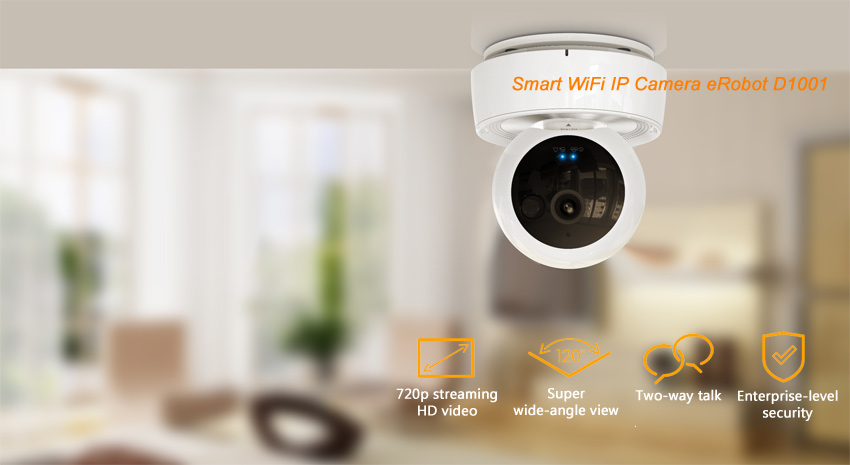
How does P2P IP camera work?
Just input the Device ID and password, without network configuration, your IP camera can connect to network for remotely monitoring. How does it work? The simple answer is "Peer to Peer" or P2P technology. P2P technology can allow camera communicates with other network devices without complicated network settings. Today, we are going to discuss it in this article.
What's the Peer to Peer?
When we talk about the Peer to Peer technology, BitTorrent comes to my mind. Peer to Peer technology has been used in many fields including P2P based online media player, Gnutella which offer media/file sharing. The most famous video communication software - Skype, also uses the P2P technology to provide VOIP solution. Because there is no server to provide file storage or distribution, the P2P end devices can communicate each other and sharing files without using the server, P2P systems can be used to provide anonymized routing of network traffic, massive parallel computing environments, distributed storage and other functions.
Some times, because of the network bandwidth and copyright or legal issue, networks are often set up to prevent peer-to-peer by network administrator.

- The advantage of P2P technology
- De-centralized solution, a pure P2P network doesn't consist any server, all the peers (IP devices) work as both client and server, this is the fundamental feature of P2P technology. Since pure peer to peer network isn't easy to manage, thus many P2P applications adopt hybrid mode.
- Scalability, scalability is considered one of the most important features of P2P networks, P2P networks can theoretically unlimited expansion. BitTorrent has tens of millions of users worldwide.
- Reliability, P2P network architecture has the advantage of naturally resistant to attack, high fault tolerance. As services are dispersed among the various nodes, the network node or be affected part on the rest of the damage is very small,but a traditional network architecture based central node's failure causes paralysis of all services.
- Cheap and affordable, using the P2P architecture can effectively use the Internet to spread a large number of ordinary nodes, all nodes in the distributed computing tasks, or store the data, the use of the idle computing storage or bandwidth, to achieve a high-performance computing and mass storage purposes, by utilizing the network the large number of free resources that can provide more computing and storage capacity at lower cost.
- Need to use the DDNS server.
- Need to do port forward or port mapping.
- DDNS service is not stable, frequently interrupt service and video transmission or can not be resolved.
- Through cloud monitoring, need to use video forwarding mechanism, need subscription, expensive.
- Establish a dedicated cloud server farms for cloud monitoring, it's expensive.
- No need DDNS server or service
- No need to set port forward or port mapping
- IP camera can connect to internet in anywhere
- Without Cloud monitoring and computing
- Complete protect your privacy with encrypted video streaming
Based on above features, there are many P2P technology based solutions including: File and content sharing, Napster, BitTorrent, emule and more; Distributed computing and storage sharing, SETI@home, Avaki, Popular Power; co-processing with shared services platform, JXTA, NET MY Service; communication and collaboration, Skype, MSN, OICQ.
P2P in IP security camera
Because of limitation from network technology, IP cameras are only limited in LAN network transmission, the old existing technologies could not enable IP camera to be accessible from Internet. To solve this bottleneck, computer fields come with many new technologies including Dynamic DNS (DDNS), SIP protocol and more. But these technologies only solve part of the problem, not the fundamental problem.
DDNS allow user access the IP camera which uses dynamic IP address, but if still utilizing the traditional video streaming technologies (RTSP/RTP), the video stream still can't broadcast on Internet (WAN), P2P technology is the right solution.
The traditional IP camera requires user to set the correct network for properly usage of IP camera, which stops many users to use the IP cameras. Moreover, intended for remotely monitoring, user have to do port forward and DDNS setting, to achieve DDNS, the DNS server should be used, therefore user can access the IP camera and watch the live video. P2P technology can allow the IP security camera automatically penetrates your network firewall and obtain IP address itself, which means eliminate the network setting and no need to use server.
Since P2P connection may bypass your firewall, and video files are confidential for users. Many IP cameras such as Unifore's eRobot IP camera adopts encryption connection to secure your data transmission.
Traditional IP camera vs P2P IP camera
- Traditional video streaming based IP camera
- Peer to Peer based IP camera
Get My Latest Posts
Subscribe to get the latest updates.
Your email address will never be shared with any 3rd parties.